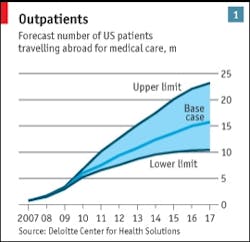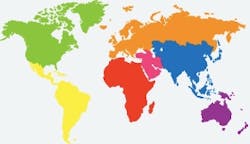Trends for 2012
In with the new, out with the old! Happy 2012 to all. As we celebrate our one-year anniversary of RDH eVillage FOCUS, I want to thank all those that have worked to make this newsletter a success: Mark Hartley, Craig Dickson, Duane DaPron, and all the authors who have so willingly given their time and expertise to the newsletter. I want to reflect on 2011 but most importantly, prepare for 2012.
Globalization of medical and dental care and practice will become a progressively more prevailing way to meet these needs. Medical tourism has always been a niche option for a fortunate or not-so-fortunate few. It seems to be for more daring types; however, it is becoming a typical option for anyone with a passport.
References
1. @erwwpr. The Big Little Book of Nexts: Trendspotting for 2012. pp 1-160. Trends2012_PR_FIN.
2. Operating profit. The Economist. 08/14/08. www.economist.com/node/11919622.
3. Patients Beyond Borders. Medical Tourism Statistics & Facts. www.patientsbeyondborders.com/medical-tourism-statistics-facts.
4. Medical Tourism. www.medicaltourism.com/en/.
5. International Living. The Top 10 Medical Travel Destinations. internationalliving.com/2010/06/the-top-10-medical-travel-destinations/.
6. Joint Commission International. www.jointcommissioninternational.org/About-JCI/.
7. Statement of the ADA Council on Ethics, Bylaws and Judicial Affairs on Dental Tourism - Ethical Obligations of Dentists. www.ada.org/sections/about/pdfs/statement_ethics_dental_tourism.pdf.
8. ADA Oral Health Topics. Tourism (Dental Care Away from Home) www.ada.org/3029.aspx.
9. The Economist. First break all the rules. www.economist.com/node/15879359.
10. Rosalind Miller. Revolutionising healthcare for the poor. The Guardian. www.guardian.co.uk/global-development/2011/jan/21/india-low-cost-healthcare.
11. Telemedicine.com. www.telemedicine.com/whatis.html.
12. NewsMedical. Types of Telemedicine. www.news-medical.net/health/Types-of-Telemedicine.aspx.
13. Behavior on msnbc.com. Internet fuels bad self-diagnoses and 'cyberchondria'. www.msnbc.msn.com/id/40199219/ns/health-behavior/t/internetfuels-bad-self-diagnoses-cyberchondria/#.Tqq5H96ImU8.
14. Ryen White; Eric Horvitz (2009). "Cyberchondria: Studies of the escalation of medical concerns in Web search". ACM Transactions on Information Systems 27 (4): 1.
15. en.wikipedia.org/wiki/Medical_students%27_disease.
16. Gunelius S. The Shift from CONsumers to PROsumers. Forbes. www.forbes.com/sites/work-in-progress/2010/07/03/the-shift-from-consumers-to-prosumers/.
17. UPMC. UPMC To Build $300 Million Center for Innovative Science. www.upmc.com/MediaRelations/NewsReleases/2011/Pages/UPMC-Center-Innovative-Science.aspx.
18. Editorial. Getting personal. Nature, 473, 253–254. (19 May 2011). www.nature.com/nature/journal/v473/n7347/full/473253b.html.
19. CDC. Number of Americans with Diabetes Rises to Nearly 26 Million. January 26, 2011. www.cdc.gov/media/releases/2011/p0126_diabetes.html.
20. diabetes.co.uk. www.diabetes.co.uk/.
21. Borland S. Diabetes rises by 50% in five years fuelled by soaring levels of obesity. Mail Online. 27th October 2011. www.dailymail.co.uk/health/article-2053908/Diabetes-rises-50-years-fuelled-soaring-levels-obesity.html.
22. Ho M. Institute of Science in Society. Global Diabetes Epidemic Rages On. 10/17/11. www.i-sis.org.uk/Global_Diabetes_Epidemic_Rages_On.php.
* all Internet sites accessed January 4, 2012.
Sincerely,
Maria Perno Goldie, RDH, MS
To read previous RDH eVillage FOCUS introductions by Editorial Director Maria Perno Goldie, go to introductions.








